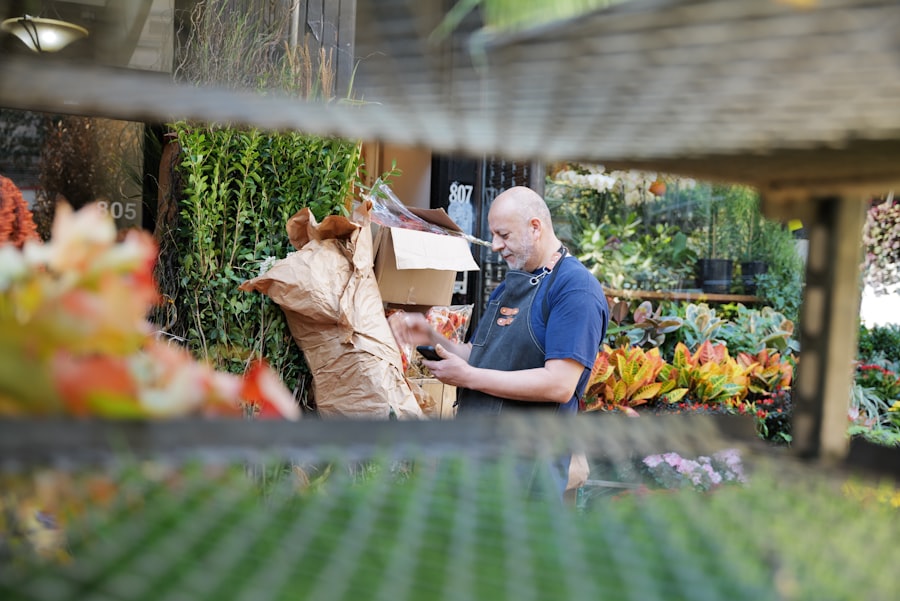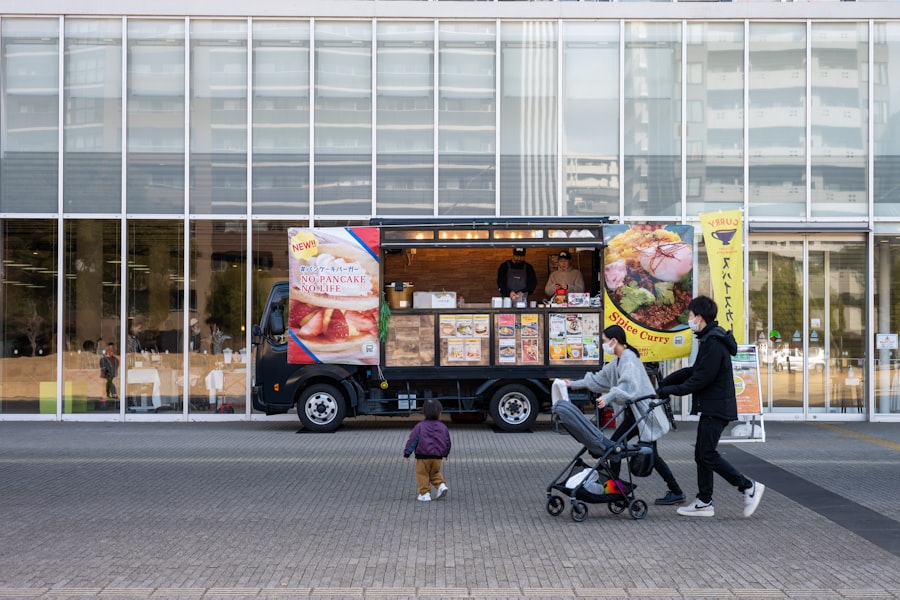In recent years, food delivery services have transformed the way you experience dining. With just a few taps on your smartphone, you can have a wide array of culinary delights delivered right to your doorstep. This convenience has led to a significant rise in the popularity of food delivery platforms, which have become an integral part of modern life.
The appeal lies not only in the ease of ordering but also in the vast selection of cuisines available at your fingertips. From local favorites to international dishes, the options are virtually limitless, catering to diverse tastes and dietary preferences. The growth of food delivery services can be attributed to several factors, including technological advancements and changing consumer behaviors.
As smartphones became ubiquitous, so did the apps that facilitate food delivery. You can now browse menus, read reviews, and track your order in real-time, all from the comfort of your home. Additionally, the fast-paced lifestyle many lead today has made dining out less feasible.
Food delivery services provide a solution that allows you to enjoy restaurant-quality meals without the need to leave your house, making it an attractive option for busy individuals and families alike.
Key Takeaways
- The rise of food delivery services has transformed the way people access and consume food, leading to a significant shift in the food industry.
- The impact of the pandemic on food delivery has accelerated the growth of the industry, as more consumers turned to delivery services for their food needs.
- The oversaturation of the food delivery market has led to increased competition among platforms, making it challenging for new entrants to gain a foothold.
- Food delivery platforms face challenges such as high operational costs, delivery logistics, and maintaining quality control, which can impact their sustainability.
- The sustainability of the food delivery model is being questioned due to concerns about environmental impact, labor practices, and the long-term viability of the business model.
The Impact of the Pandemic on Food Delivery
The COVID-19 pandemic acted as a catalyst for the food delivery industry, propelling it into the spotlight. As lockdowns and social distancing measures were implemented worldwide, traditional dining options were severely restricted. You may have found yourself relying more heavily on food delivery services during this time, as they provided a safe way to enjoy meals from your favorite restaurants while adhering to health guidelines.
This surge in demand led to unprecedented growth for many food delivery platforms, with some reporting record numbers of orders. Moreover, the pandemic forced restaurants to adapt quickly to survive. Many establishments that had never considered offering delivery services were suddenly compelled to do so.
You likely witnessed a wave of local eateries pivoting their business models, embracing technology to reach customers who were confined to their homes. This shift not only kept many restaurants afloat but also introduced you to new dining options that you may not have explored otherwise. The pandemic fundamentally changed the landscape of food delivery, making it a staple in your daily life.
The Oversaturation of the Food Delivery Market

As food delivery services gained traction, the market began to see an influx of new players vying for your attention. You may have noticed an overwhelming number of apps and platforms promising quick and convenient service.
With so many options available, it can be challenging for you to determine which service best meets your needs. This oversaturation has created a paradox for consumers like you. On one hand, you enjoy the freedom of choice and the potential for better deals; on the other hand, the sheer volume of options can lead to confusion and decision fatigue.
As companies strive to differentiate themselves in this crowded space, you may also notice varying levels of service quality and reliability, further complicating your experience.
The Challenges Faced by Food Delivery Platforms
| Challenges | Impact |
|---|---|
| High competition | Decreased market share |
| Delivery logistics | Delayed orders and customer dissatisfaction |
| Quality control | Negative reviews and loss of customers |
| Regulatory issues | Legal challenges and fines |
| Customer retention | High customer acquisition costs |
Despite their rapid growth, food delivery platforms face numerous challenges that can impact your experience as a consumer. One significant issue is the high commission fees charged to restaurants, which can lead to increased menu prices for you. Many restaurants struggle to maintain profitability while paying these fees, which can range from 15% to 30% of each order.
As a result, you may find that your favorite local spots are forced to raise their prices or even discontinue their delivery services altogether. Additionally, food delivery platforms must navigate logistical hurdles such as managing delivery times and ensuring food quality upon arrival. You may have experienced delays or received cold meals due to these challenges.
The pressure on delivery drivers is also considerable; they often work long hours for low pay and face unpredictable conditions on the road. These factors can contribute to inconsistent service quality, leaving you frustrated when your expectations are not met.
The Sustainability of the Food Delivery Model
As food delivery services continue to grow in popularity, questions about their sustainability arise. You might wonder whether this model can endure in the long term or if it is merely a passing trend. The environmental impact of food delivery is a significant concern; single-use packaging and increased vehicle emissions contribute to pollution and waste.
As a conscious consumer, you may feel conflicted about supporting services that contribute to these issues. In response to these concerns, some food delivery platforms are exploring more sustainable practices. You may have noticed initiatives aimed at reducing packaging waste or partnering with eco-friendly restaurants that prioritize sustainability.
However, these efforts are still in their infancy, and it remains to be seen whether they will be enough to address the broader environmental implications of food delivery services. As a consumer, you play a crucial role in shaping this industry by supporting businesses that prioritize sustainability and advocating for more responsible practices.
The Pressure on Restaurants and Food Providers

The rise of food delivery services has placed immense pressure on restaurants and food providers. While these platforms offer an opportunity for increased sales, they also create challenges that can strain operations. You may have observed that many restaurants are now forced to balance their dine-in services with delivery demands, often leading to longer wait times and reduced quality control.
This juggling act can be particularly challenging for smaller establishments that lack the resources to manage both effectively. Moreover, the reliance on food delivery platforms can create a dependency that is difficult for restaurants to escape. As they invest more in these services, they may find themselves sacrificing their brand identity and customer relationships in favor of convenience.
You might notice that some restaurants prioritize their presence on delivery apps over their dine-in experience, which can dilute the unique atmosphere that initially drew you to them. This shift raises questions about the future of dining culture and how it will evolve in response to the growing influence of food delivery.
The Consumer Perspective on Food Delivery
From your perspective as a consumer, food delivery services offer undeniable convenience and variety. You appreciate being able to explore different cuisines without leaving your home or having to cook after a long day at work. The ability to order from multiple restaurants in one go is another perk that enhances your dining experience.
However, this convenience comes with its own set of challenges that can affect your overall satisfaction. You may find yourself grappling with issues such as inconsistent service quality or unexpected fees that can add up quickly. While many platforms advertise low delivery costs or promotions, hidden charges often emerge during checkout, leaving you feeling frustrated or misled.
Additionally, the quality of food upon arrival can vary significantly depending on factors like distance and time taken for delivery. These inconsistencies can detract from your enjoyment and lead you to reconsider whether food delivery is worth it in certain situations.
The Regulatory Environment for Food Delivery
As food delivery services continue to expand, regulatory scrutiny has increased as well. Governments around the world are beginning to recognize the need for oversight in this rapidly evolving industry. You may have noticed discussions around labor rights for delivery drivers and fair pricing practices for restaurants gaining traction in various regions.
These regulatory efforts aim to create a more equitable environment for all stakeholders involved in the food delivery ecosystem. The regulatory landscape is complex and varies significantly from one location to another. In some areas, local governments have implemented measures to protect gig workers by ensuring fair wages and benefits.
In contrast, other regions may still lack comprehensive regulations governing food delivery platforms. As a consumer, you may find yourself navigating this patchwork of regulations when choosing which services to support or when advocating for better practices within the industry.
The Future of Food Delivery Services
Looking ahead, the future of food delivery services appears both promising and uncertain. As technology continues to advance, you can expect innovations such as drone deliveries or automated vehicles that could revolutionize how meals reach your doorstep. These developments could enhance efficiency and reduce costs for both consumers and restaurants alike.
However, they also raise questions about job displacement and the implications for workers within the industry. Additionally, as consumer preferences evolve, food delivery platforms will need to adapt accordingly. You may see an increased focus on health-conscious options or sustainable practices as more people prioritize wellness and environmental responsibility in their purchasing decisions.
The ability of these platforms to respond effectively will determine their long-term viability in an ever-changing market.
The Potential Burst of the Food Delivery Bubble
Despite its rapid growth, there are signs that the food delivery bubble may be at risk of bursting. As competition intensifies and consumer habits shift, you might witness a consolidation of platforms or even some companies folding under pressure. This potential downturn could lead to fewer choices for you as a consumer and may impact pricing structures across the board.
Moreover, if economic conditions change or if consumers begin prioritizing dining out again post-pandemic, demand for food delivery could decline significantly. You may find yourself returning to traditional dining experiences as restaurants adapt and innovate their offerings in response to changing consumer preferences. This shift could reshape the landscape of food delivery services as we know them today.
Adapting to the Changing Landscape of Food Delivery
To thrive in this evolving environment, both consumers and businesses must adapt to the changing landscape of food delivery services. As a consumer, staying informed about trends and emerging platforms will help you make better choices when ordering meals online. You might consider exploring local eateries that prioritize sustainability or offer unique dining experiences beyond what mainstream apps provide.
For restaurants and food providers, embracing technology while maintaining strong customer relationships will be crucial for success in this competitive market. By focusing on quality service and innovative offerings, they can differentiate themselves from competitors while meeting your needs as a discerning consumer. Ultimately, navigating this dynamic landscape will require collaboration among all stakeholders—consumers, restaurants, and delivery platforms alike—to create a sustainable future for food delivery services.
In recent years, the food delivery industry has experienced rapid growth, leading many to speculate about the sustainability of this boom. The so-called “Food Delivery Bubble” has raised questions about the long-term viability of these services, especially as competition intensifies and profitability remains elusive for many companies. A related article that delves into the economic implications of such market phenomena can be found on How Wealth Grows. This article provides insights into the broader economic trends that influence industries like food delivery, offering a comprehensive analysis of market dynamics. For more information, you can read the full article by visiting How Wealth Grows.
WATCH THIS! Delivery Apps Burn Billions, Then Torch Your Wallet — Let’s Expose the Surcharge Circus.
FAQs
What is the food delivery bubble?
The food delivery bubble refers to the rapid growth and saturation of the food delivery market, with an increasing number of companies entering the industry and competing for market share.
What are some examples of food delivery companies?
Some examples of food delivery companies include Uber Eats, DoorDash, Grubhub, Postmates, and Deliveroo.
What are the factors contributing to the food delivery bubble?
Factors contributing to the food delivery bubble include consumer demand for convenience, the rise of mobile technology, and the low barriers to entry for new food delivery startups.
What are the potential risks of the food delivery bubble?
Potential risks of the food delivery bubble include market oversaturation, intense competition leading to price wars, and the potential for some companies to go out of business.
How are food delivery companies addressing the challenges of the food delivery bubble?
Food delivery companies are addressing the challenges of the food delivery bubble by diversifying their services, forming partnerships with restaurants, and investing in technology to improve efficiency and customer experience.
